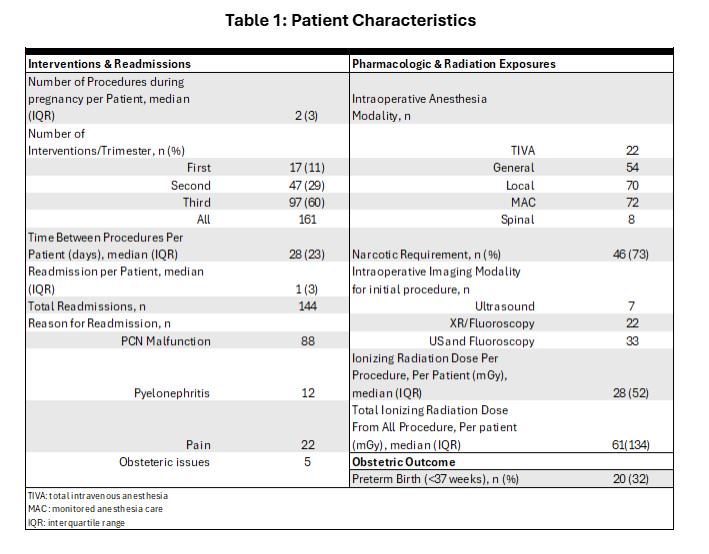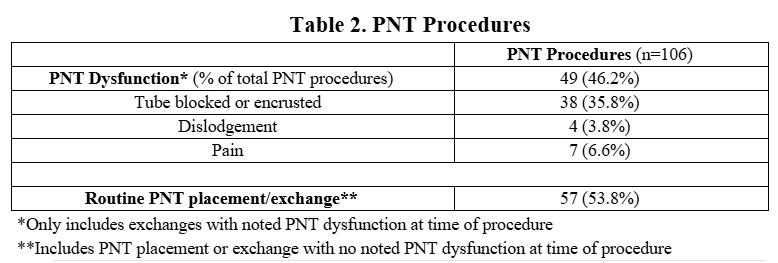Back to 2025 Abstracts
Percutaneous Nephrostomy Tubes in Pregnancy: A Multi-Institutional Experience
Analiese Ionson, MD
1,
Grayden S. Cook, MD2, Madison Lyon, MD
1, Daniel Wollin, MD, MPH
2, Smita De, MD
1.
1Glickman Urological & Kidney Institute, Cleveland Clinic, Cleveland, OH, USA,
2Mass General Brigham, Boston, MA, USA.
BACKGROUND: Acute flank pain in pregnancy poses significant challenges, from imaging choices to determining urgent decompression and optimal treatment. Each decision carries risks for both mother and fetus. This study shares our multi-institutional experience with percutaneous nephrostomy tubes (PNTs) in pregnant patients with suspected obstruction.
METHODS: We analyzed data from two institutions (2011-present) on pregnant patients managed with PNTs until resolution or definitive treatment. Chart review included demographics, obstetric history, anesthesia type, radiation exposure, readmissions, and preterm labor rates. Descriptive statistics identified clinical trends.
RESULTS: Among 63 patients (median age 28), nearly one-third had prior stones. Most (86%) presented in the 2nd or 3rd trimester. The median number of PNTs placed per patient was 2 (range 1-14), with a median interval of 28 days between procedures. Median radiation exposure was 61 mGy (IQR 134), and nearly one-third experienced preterm labor. Further patient and procedure details are illustrated by Table 1 such as readmission data. Prevalence of routine PNT exchange compared to exchange due to PNT dysfunction is highlighted by Table 2.
CONCLUSIONS:PNTs in pregnancy carry high risks, including frequent readmissions, multiple exchanges, radiation exposure, and preterm labor. Our study highlights the need for optimized management strategies.


Back to 2025 Abstracts

